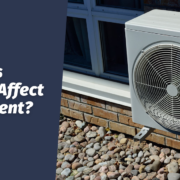The Do’s & Don’ts Of Defrosting A Commercial Freezer
Today’s modern commercial freezers are designed to save time, money, and generally make life easier because they’re auto-defrosting. That means there’s no build up of ice to take up valuable storage space, and there’s not the inconvenience of having to relocate perishable inventory while you turn off the freezer and let the ice melt.
HOW DOES DEFROSTING WORK?
Commercial freezers come with a defrost system controlled by a defrost control board that determines when to turn on the heater to melt ice build-up on the evaporator coils. During a defrost cycle, the coils heat up to melt any accumulated frost or ice. This allows the evaporator to maintain its optimal heat absorption and cooling functions. But defrost control boards aren’t foolproof. If the control board isn’t functioning correctly, the defrost cycle may not turn on causing frost to build up on the coils and, over time, inside the freezer.
When a defrost control board fails or malfunctions, the board must be replaced. If the ice build up is significant, you may need to manually defrost the freezer. You should plan to defrost when the ice thickness reaches ¼ or ½ inch, if not sooner. Otherwise, your freezer is working harder to cool your food, wasting energy, and increasing your electrical bill in the process. And because ice build-up obstructs air circulation, the temperature of your freezer is less likely to be consistent, which can pose a food safety risk and affect the quality of your inventory.
Read More: The Best Commercial Freezers of 2022
DEFROSTING DO’s
For best results, defrosting requires emptying the contents of your freezer. This allows for better airflow. Move inventory to another freezer. Then turn off the freezer and leave the door open overnight so the ice can melt and water drain. To help speed up the process, you can:
- Place a fan in front of the open freezer door to direct warmer air into the space and speed evaporation of water.
- Use a wooden or rubber scrapper to remove large chunks of ice but be careful not to scratch or damage the inside of the freezer or its components
- Place bowls or containers of warm water on the freezer shelves to help ice melt faster
- Carefully use a blow dryer to remove layers of frost or ice, but be certain to control the temperature and how long you direct heat. You don’t want to damage any gaskets or seals. And don’t stand in puddles while you are using the blow dryer.
- Place warm/hot towels over areas of ice buildup.
- Do clean your freezer space before restocking
- Do ensure your freezer is cold again before putting any food back in it. This could take a few hours once it’s turned back on after defrosting.
DEFROSTING DON’Ts
- Don’t leave the freezer turned out
- Don’t close the freezer door while defrosting
- Don’t use boiling water
- Don’t use an ice pick, knife, or sharp utensil to scrape ice. You can easily cut yourself or damage the freezer.
- Don’t wait until you can’t close the freezer door to finally address the ice buildup. Excessive ice in a refrigerator can drastically limit its effectiveness, making the appliance work harder and increasing its electricity consumption.
- Don’t forget to wipe down the seals of your unit’s door.
Read More: Commercial Refrigerator and Freezer Market Growth at a Rate of 7.00% by 2029
REPLACE THE DEFROST CONTROL BOARDS
Before turning your freezer back on, replace the defrost control board. ICM Controls manufactures top quality, cost-effective defrost controls to control the timing and duration of defrosting, with options to manage temperature, alarms, active or passive cycles. ICM550-ENC is a drag and drop replacement for several different control boards, includes a multi-functional timer, and is available with and without a weatherproof enclosure.









 ICM Controls
ICM Controls